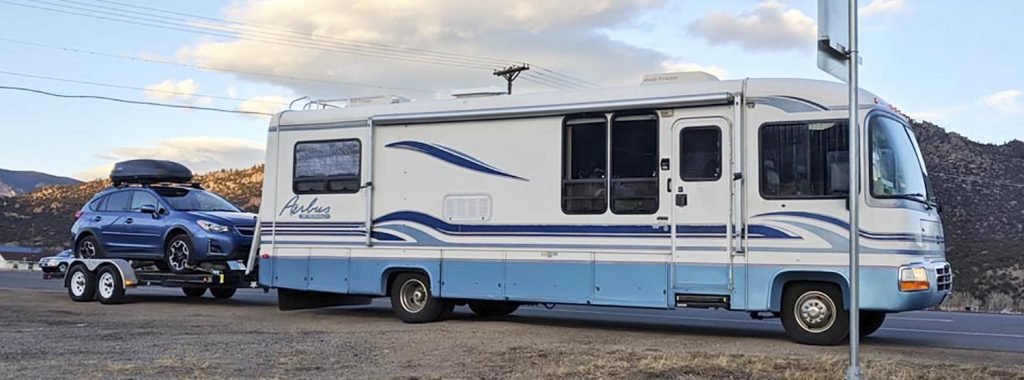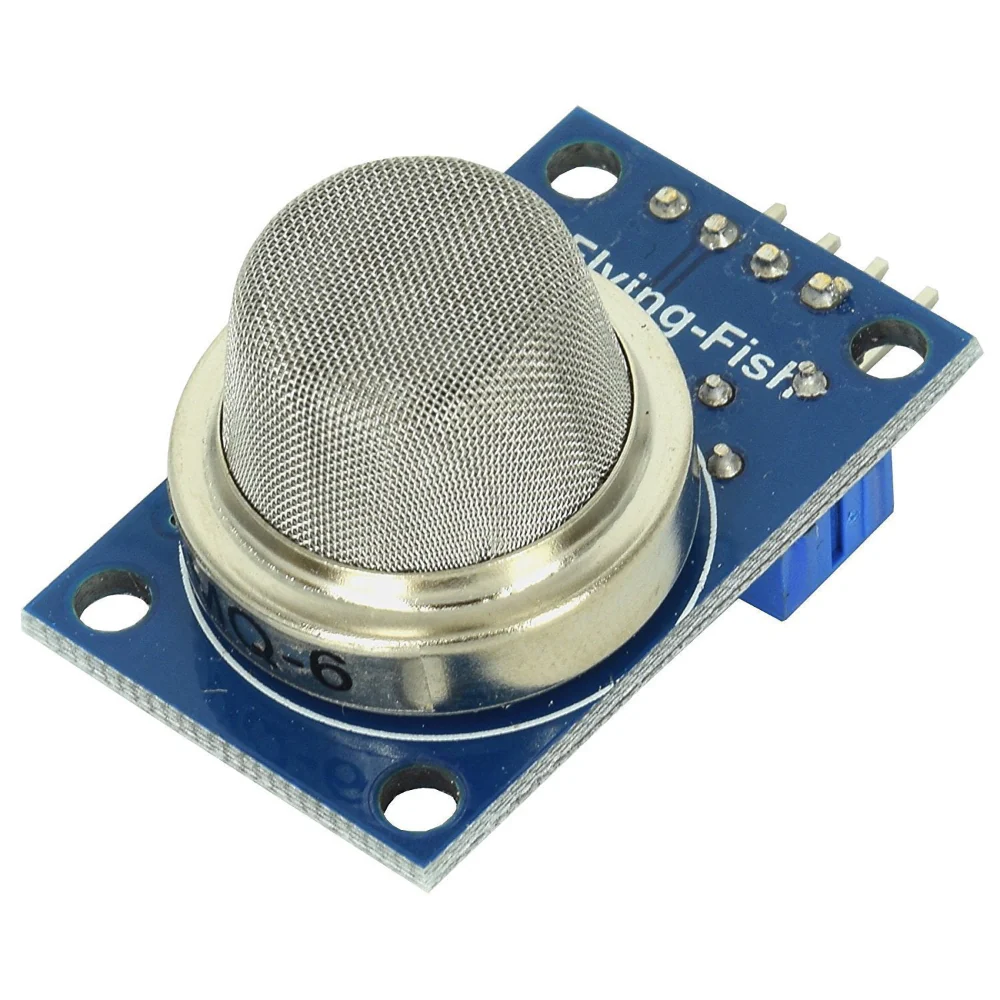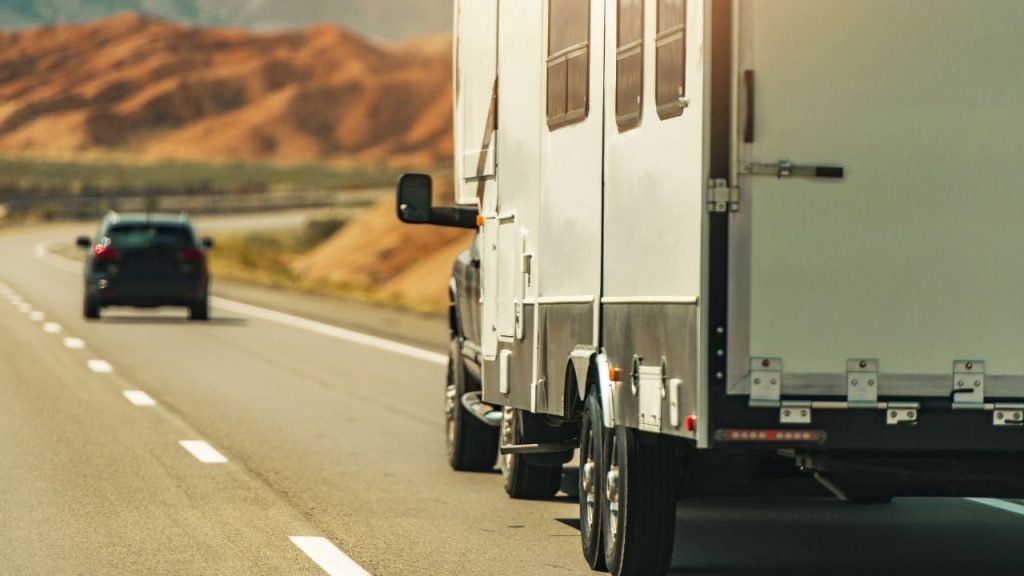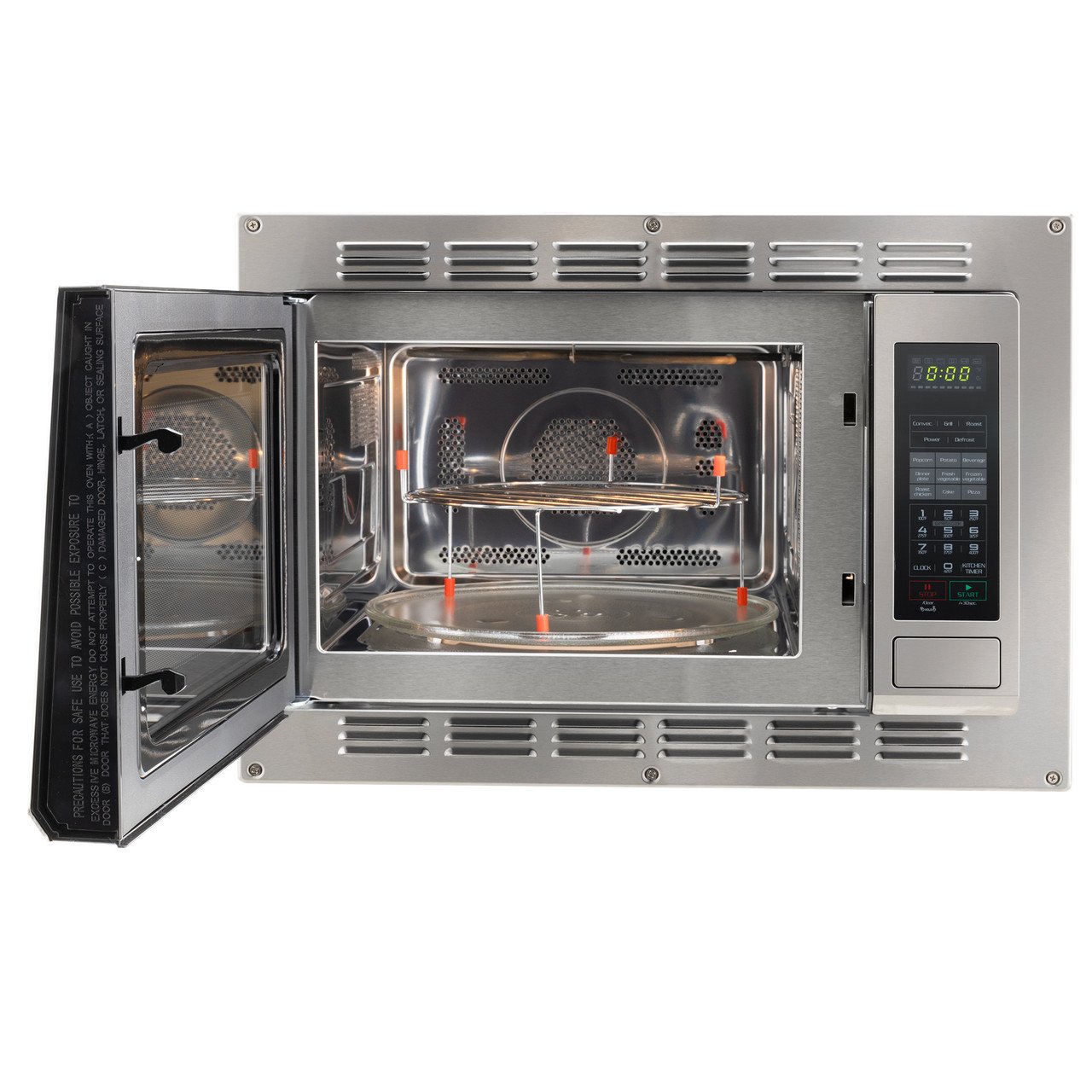Towing an AWD car behind an RV requires careful planning. It’s not as simple as it seems.
This process needs attention to detail and the right equipment. Many RV enthusiasts love the freedom of bringing their car along. It allows them to explore local areas without moving their home base. But towing an AWD car can be tricky.
AWD systems are complex, and improper towing can damage your car. In this guide, we’ll break down the steps to safely tow your AWD car behind your RV. You’ll learn about the necessary equipment and precautions. By the end, you’ll feel confident and prepared for your next adventure. Let’s get started on making your travels smoother and stress-free.
Preparation Steps
Ensure the car is in neutral and the parking brake is off. Attach safety chains securely. Check all lights and signals work before starting the journey.
Before towing your AWD car behind an RV, preparation is key. Proper steps ensure safety and prevent damage. Here are the essential steps to follow.
Check Manufacturer’s Guide
First, refer to the car’s manual. The manufacturer’s guide has important towing information. Not all AWD cars can be flat towed. Some need special equipment. The manual will state if the car can be towed with all wheels on the ground. Follow the manufacturer’s recommendations closely.
Inspect The Tow Equipment
Next, check the towing equipment. Ensure the tow bar is compatible with your car. Look for signs of wear or damage. Inspect the hitch and connections. All parts must be secure and in good condition. Safety chains must be strong and properly attached. Check the lights and brakes. They should function correctly when connected to the RV. Proper inspection prevents accidents and ensures a safe journey.
Choosing The Right Tow Method
Towing an AWD car behind an RV requires choosing the right method. Each method has its pros and cons. Ensure you pick the best one for your needs. Here, we will discuss Flat Towing, Dolly Towing, and Trailer Towing.
Flat Towing
Flat towing involves all four wheels of the car being on the ground. This method is also called four-down towing. It’s simple and does not require extra equipment, but not all AWD cars are suitable for this.
To check if your car can be flat towed, refer to the owner’s manual. Follow all guidelines to avoid damaging the vehicle.
Dolly Towing
Dolly towing uses a two-wheel trailer where the front wheels of the car are off the ground. The rear wheels remain on the road. This method is useful if flat towing is not an option for your AWD car.
Pros:
- Less wear on front tires
- Reduces transmission stress
Cons:
- Requires extra storage for the dolly
- Can be tricky to maneuver
Trailer Towing
Trailer towing involves placing the entire car on a trailer. All four wheels are off the ground. This method is the safest and most versatile. It works for any car, including AWD models.
Pros:
- Prevents any damage to the car
- Suitable for long distances
Cons:
- Expensive equipment
- Needs ample storage space
Choosing the right tow method depends on your car and your travel needs. Always prioritize safety and follow the manufacturer’s guidelines.
Safety Precautions
Towing an AWD car behind an RV needs extra care. It’s crucial for the safety of both the car and the RV. Following these safety precautions will help ensure a smooth and secure towing experience.
Check Weight Limits
Before you start towing, check the weight limits of both your RV and your AWD car. Ensure the combined weight does not exceed the RV’s towing capacity. Exceeding this limit can lead to serious accidents.
| Vehicle | Weight Limit (lbs) |
|---|---|
| RV | 8,000 |
| AWD Car | 4,000 |
Use Proper Signals
Using proper signals is crucial when towing. Ensure the car’s lights are in sync with the RV. This includes brake lights and turn signals. Use a signal wiring kit to connect the car’s lights to the RV’s electrical system.
- Check signal connections before each trip
- Replace broken lights immediately
- Use reflective signs at night
Securing The Car
Securing your AWD car correctly when towing it behind an RV is crucial. This process ensures the safety of both your car and RV. It prevents damage and accidents during your journey. Follow these steps to secure your car properly.
Attach Tow Bar
The first step is to attach the tow bar to your AWD car. Ensure the tow bar is compatible with your vehicle and RV. Follow these steps:
- Position the car behind the RV.
- Align the tow bar with the car’s mount points.
- Securely attach the tow bar using the provided pins and clips.
- Double-check the connections to ensure they are tight.
Proper attachment is essential to avoid any mishaps. Incorrectly attaching the tow bar can result in the car detaching while in transit.
Use Safety Chains
Safety chains are a backup in case the tow bar fails. They provide an extra layer of security. To use safety chains:
- Attach one end of the chain to the RV’s hitch.
- Connect the other end to the car’s chassis.
- Cross the chains under the tow bar.
- Ensure the chains are not too loose or too tight.
Using crossed chains ensures better support and prevents the car from swaying. Always check the chains for wear and tear before starting your trip.
Securing your AWD car properly can save you from many problems. Following these steps ensures a safe and pleasant journey.
Driving The Rv With A Tow
Towing an AWD car behind an RV requires a shift in driving habits. This change ensures safety and a smooth journey. Understanding the nuances of driving with a tow will make your trip more enjoyable.
Adjust Driving Technique
With an AWD car in tow, driving demands more attention. Your RV now has extra weight. This affects acceleration and braking. Take it slow and steady. Give yourself more time to stop. Brake early to avoid sudden stops. Sudden moves can cause sway. Smooth steering is crucial. Avoid sharp turns. Gradual movements keep the tow stable.
Plan For Extra Space
Towing adds length to your RV. This changes how you navigate turns. Take wider turns to accommodate the extra length. Ensure ample space when merging or changing lanes. Be mindful of your rear. Always check mirrors frequently. Planning ahead is key. Know your route. Avoid tight spots and narrow roads.
Maintenance Tips
Maintaining your AWD car while towing it behind an RV is crucial. Regular checks ensure safety and prevent potential damage. Follow these maintenance tips to keep your car in top condition during your travels.
Regularly Check Connections
Ensure all towing connections are secure. This includes hitch, tow bar, and safety chains. Loose connections can lead to accidents. Check them before each trip and during rest stops. A quick inspection saves you from potential hazards.
Inspect Tires And Brakes
Examine your tires for wear and proper inflation. Underinflated tires can cause blowouts. Check the brakes for any signs of wear or damage. Properly functioning brakes are crucial for safety. Regular inspections help avoid unexpected issues.
Legal Considerations
Before towing an AWD car behind an RV, it is crucial to understand the legal aspects involved. Ignoring these could lead to fines or accidents. Below are essential legal considerations you must be aware of.
Understand State Laws
Each state has its own set of rules for towing. Some states require specific equipment, while others have restrictions on the type of vehicles that can be towed. Ignorance of these laws can result in penalties. Here is a brief overview:
| State | Required Equipment | Restrictions |
|---|---|---|
| California | Tow bar, safety chains | No triple towing |
| Texas | Brake lights, turn signals | Max length 65 feet |
Check the laws of each state you plan to travel through. This ensures you comply with all regulations.
Ensure Proper Licensing
Towing an AWD car may require special licensing. Some states need you to have a specific endorsement on your driver’s license. Here’s what you may need:
- Valid driver’s license
- Towing endorsement
- Insurance for both vehicles
Ensure all your documents are up-to-date. This avoids any legal complications during your trip.
Troubleshooting Common Issues
Towing an AWD car behind an RV can sometimes pose challenges. Common issues might arise during the journey. Knowing how to handle these problems is essential. This section covers troubleshooting common issues.
Handling Overheating
Overheating can occur if the AWD car is not properly prepared. Ensure the cooling system is in good condition. Regularly check the coolant levels. Keep an eye on the temperature gauge while towing. If it starts to rise, pull over and let the engine cool down.
Use a high-quality coolant. This helps keep the engine temperature stable. Make sure the radiator fan is working properly. A malfunctioning fan can cause overheating. Pay attention to any strange noises. Unusual sounds might indicate a problem with the cooling system.
Dealing With Breakdowns
Breakdowns can happen unexpectedly. Always have a basic toolkit on hand. Include essential tools like wrenches, screwdrivers, and pliers. Carry spare parts, such as fuses and belts. This can help you fix minor issues on the road.
If your AWD car breaks down, stay calm. Pull over to a safe location. Use hazard lights to alert other drivers. Assess the situation and identify the problem. If you can’t fix it, call for roadside assistance. Make sure you have a reliable service provider’s contact information.
Preventative maintenance can reduce the risk of breakdowns. Regularly inspect your AWD car before trips. Check the battery, tires, and fluid levels. Proper maintenance ensures a smoother towing experience.
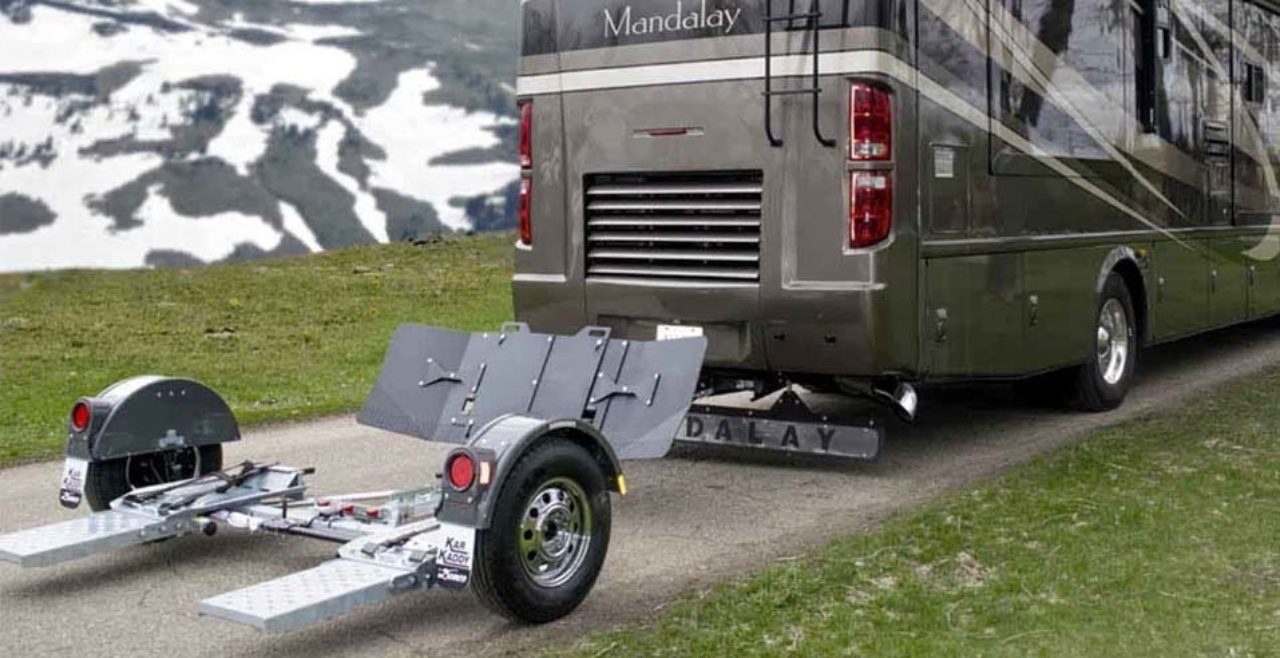
Credit: www.outdoorsy.com
Frequently Asked Questions
Can You Tow An Awd Car Behind An Rv?
Yes, you can tow an AWD car behind an RV. You need to use a flatbed trailer or a tow dolly.
What Equipment Do I Need To Tow An Awd Car?
To tow an AWD car, you need a flatbed trailer or a tow dolly. These ensure all wheels are off the ground.
Is It Safe To Tow An Awd Car With A Tow Dolly?
Yes, it is safe to tow an AWD car with a tow dolly. Ensure the car’s rear wheels are off the ground.
Can I Use A Tow Bar For An Awd Car?
Using a tow bar for an AWD car is not recommended. It can damage the drivetrain. Use a flatbed trailer instead.
Conclusion
Towing an AWD car behind an RV requires careful planning and preparation. Always check the owner’s manual first. Use the right equipment to avoid damage. Ensure all connections are secure before starting your journey. Regularly inspect the setup during stops.
Practice cautious driving to maintain safety. With these steps, you can tow your AWD car confidently. Enjoy your travels and stay safe on the road.

